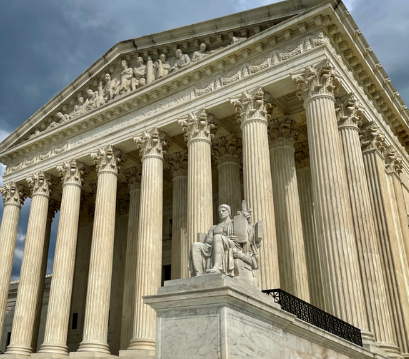
A Call to Action: Renewing the Fight for Abortion Rights Nearly Three Years Post-Dobbs
A doctor is indicted for doing her job. While gasping for air, a pregnant person drives over an hour to see a doctor. Another desperate woman suffers in agony as her baby dies slowly inside her. Across the country, a judge decides that a teen is too young for an abortion, yet is somehow mature enough to have a child. Family members sob as a mother’s heart stops because doctors hesitated to treat the miscarriage that drained her body of its blood. This is our abhorrent reality nearly three years after the Dobbs decision dismantled the constitutional right to abortion; we are witnessing the devastating consequences that we were warned about.
Yet, as nearly 25 million people lack access to the full spectrum of reproductive healthcare, abortion is fading from the headlines. As time further removes us from that monumental decision, concern is fading from our collective consciousness. As a public health student and aspiring OB/GYN, I implore healthcare providers around the country to renew their fight against abortion restrictions. Abortion access is an urgent social justice issue, and now more than ever, we must not let time silence this crisis. The consequences of this dire situation we are witnessing may only be remedied by restoring nationwide access to comprehensive reproductive healthcare. The emerging evidence of the detrimental consequences of overruling Roe v. Wade must reignite our determination to fight for reproductive rights.
Although patients are still getting abortions despite restrictions, Dobbs is preventing women from accessing the care they need. For instance, new data demonstrates that birth rates have increased disproportionately in areas with the most restrictive abortion legislation; this change is driven by unwanted births by women who were denied abortions. Furthermore, these increases in birth rates disproportionately impact people of color, those with less education, and those with low income— the same groups most affected by critically high maternal mortality. In fact, maternal mortality has increased since Dobbs, especially among states that have imposed the strictest abortion laws. Besides life-threatening health conditions, we know the devastating consequences of carrying an unwanted pregnancy to term also include long-term economic insecurity, mental health issues, suicide, and abnormal childhood development.
Beyond the impact of forced birth of unwanted pregnancies, we are seeing evidence that Dobbs is harming those who desire to keep their pregnancies, and even people who aren’t even pregnant. Doctors are delaying care for miscarriage and life-threatening maternal conditions due to uncertainties surrounding abortion legislation and the fear of litigation, and women are losing their lives to these delays. Additionally, as OB/GYN providers flee abortion hostile states, maternal care deserts widen, leaving millions of women without access to other forms of reproductive care. This has led to a notable decrease in access to contraceptives.
In the face of the mounting evidence that nearly half the country is acutely suffering from a lack of access to essential abortion care, I urge physicians, policymakers, and the general public to remain committed to restoring abortion access across the US. June 22nd, 2025 will mark three years since the Dobbs decision dismantled the right to abortion, and we must not become complacent as we approach this anniversary. Even as we face an administration that is oppositional to this cause, we must not forget about this issue. We must refuse to relent in the struggle to restore reproductive rights. It is our obligation to fight for our patients in and out of the office. Talk to your legislators. Restoring abortion access on a national level remains as critical as ever. Do not normalize silence.
Post a comment